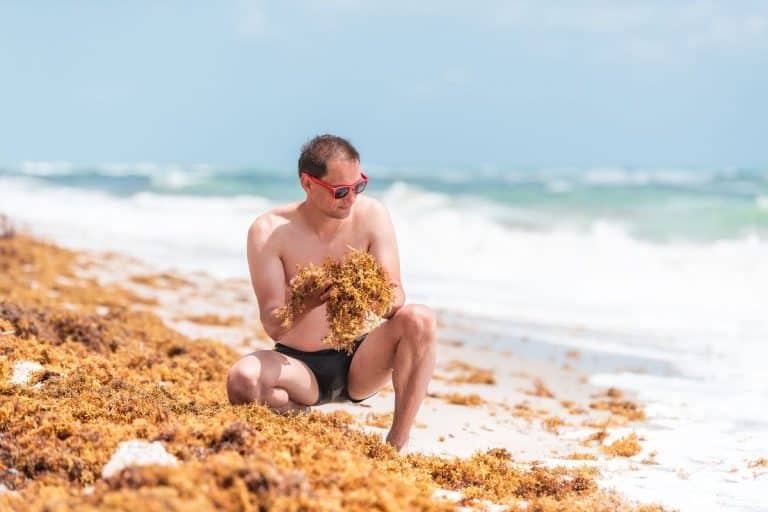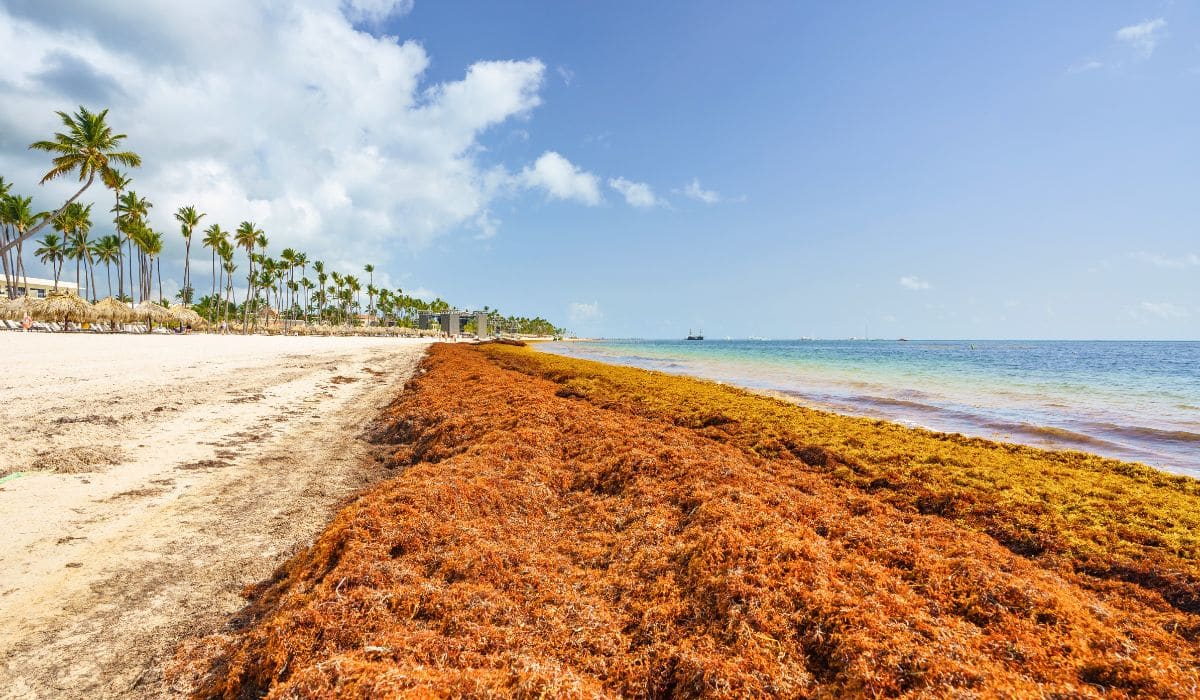A belt of sargassum seaweed arrived on the Florida coast less than a month ago. Although this happens every year, this year we have already set records. And it’s not even peak season yet.
“It’s already created a lot of problems for local people for tourism, for the economy, for corals, for coral reefs, for seagrass, turtles, and for people,” shared Dr. Chuanmin Hu.
Dr. Hu is a Professor of Oceanography at the University of South Florida. He claims that this algal belt is not brand-new.
The belt originated in the Sargasso Sea of the Atlantic Ocean. Experts first noticed an increase in seaweed blobs washing up on Florida shores in 2011.
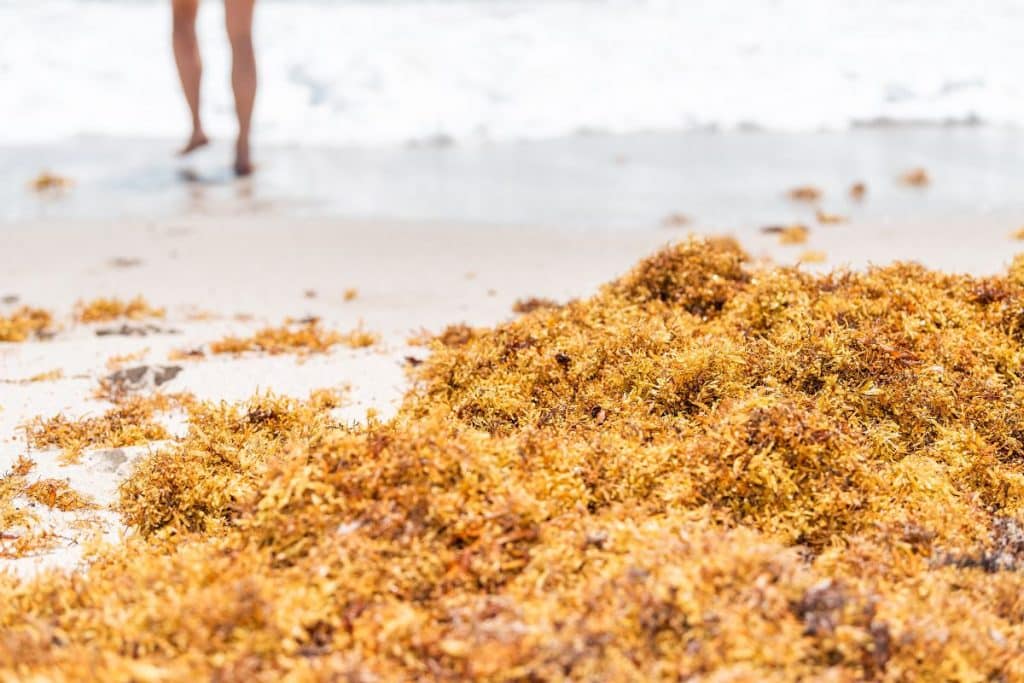
The belt saw 13 million metric tons in March, the most ever recorded for that month and breaking the previous record.
Despite this astounding figure, Dr. Hu noted that the belt covers only 0.1% of the ocean’s surface.
“This amount is not in one location. It’s spread all over the Tropical Atlantic. It’s a huge area. It’s 5 million kilometers in that area,” Dr. Hu said.
In Florida, summer is the time when more algae accumulates. But numerous places in Florida have already noticed algae accumulations on their shores.
Last year, Broward County collected about 282 yards of seaweed. Compared to the same period this year, they have collected 920 yards so far.
In Miami-Dade, they have gathered about 5,000 cubic yards since March.
Since the beginning of April, the seaweed has been visible in parts of the Panhandle as well, raising the question of whether or not we can stop it from washing ashore.
“It’s possible. It’s just a factor of benefit versus cost,” Dr. Hu said.
The cost to clear the seaweed was around $3.9 million paid by Miami-Dade County.
Broward County composts its waste, resulting in an annual cost savings of nearly $350,000. However, local government and tourism still have to bear the financial burden.
For that reason, scientists like Dr. Hu are trying to figure out why more of it is flourishing.
“Seaweed is a plant, as with other plants, it requires light, nutrients, and the right temperature to grow. In the Tropical Atlantic Ocean, all these conditions are there. So why do we see an increasing trend in recent years? There are a lot of factors. No one can really pinpoint one factor, you know that is the killer.”
Although it is difficult to anticipate what might happen next, researchers know that the pattern of increasing algae in Florida is likely to continue.
“This represents a new normal compared to ten years ago, and people need to be prepared.”
Recent Updates on Sargassum Seaweed in Florida from our FB group community:
Sargassum Seaweed Update Florida is a FB group with locals from Florida or people visiting and posting updates on situations in different coastal areas of the state.
May 4
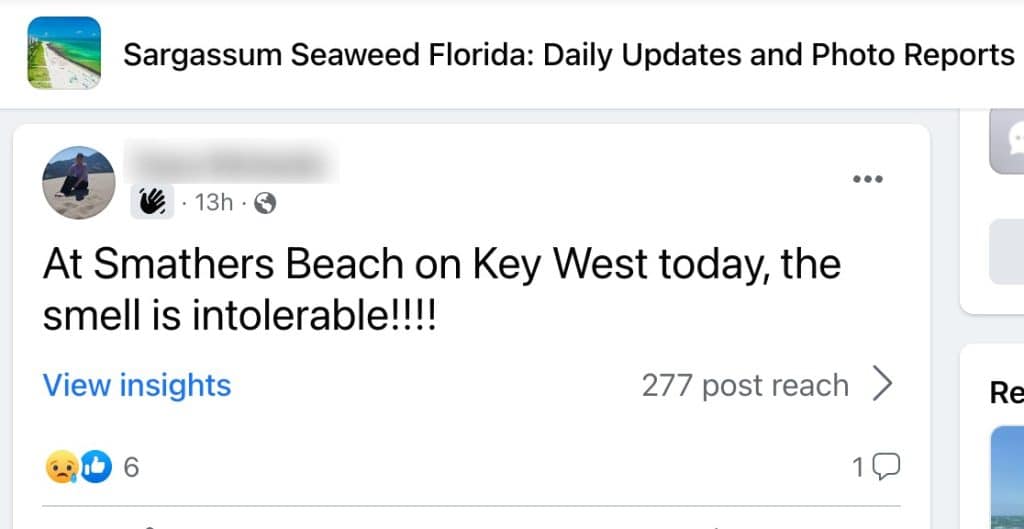
May 1
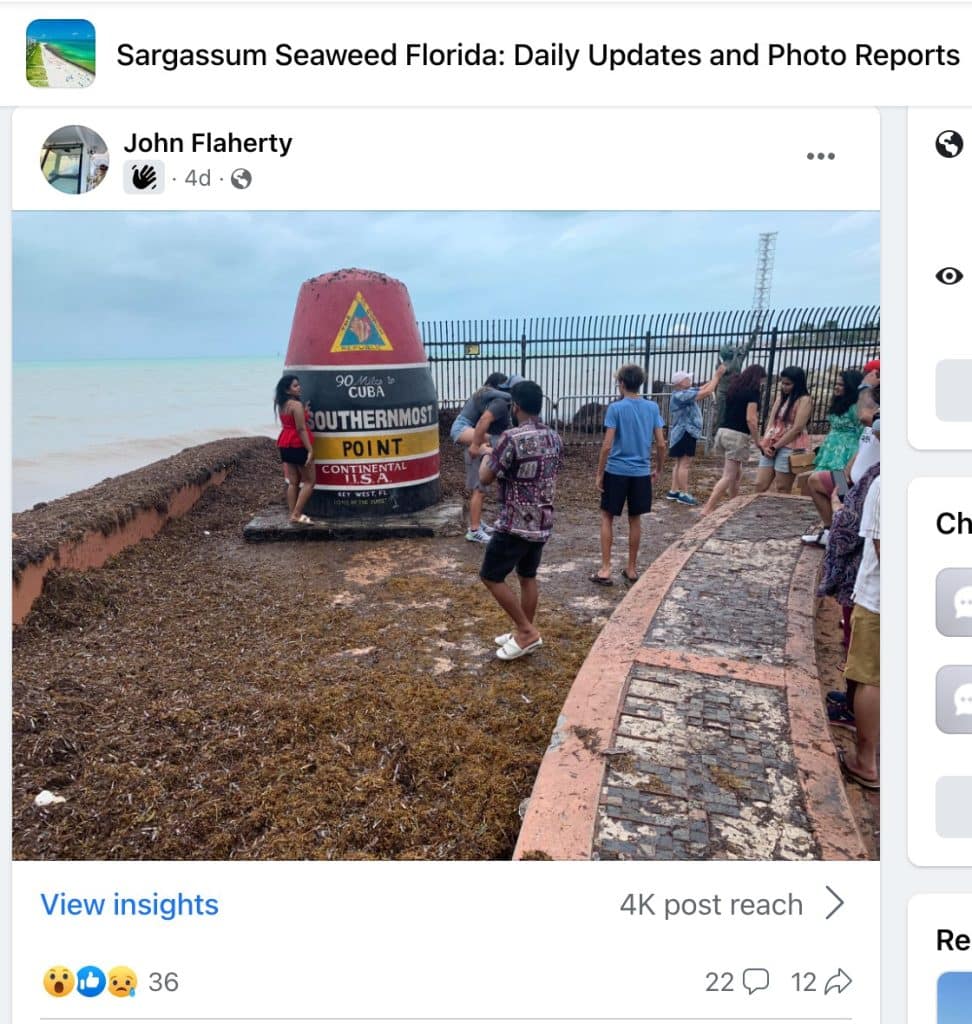
April 30

April 29
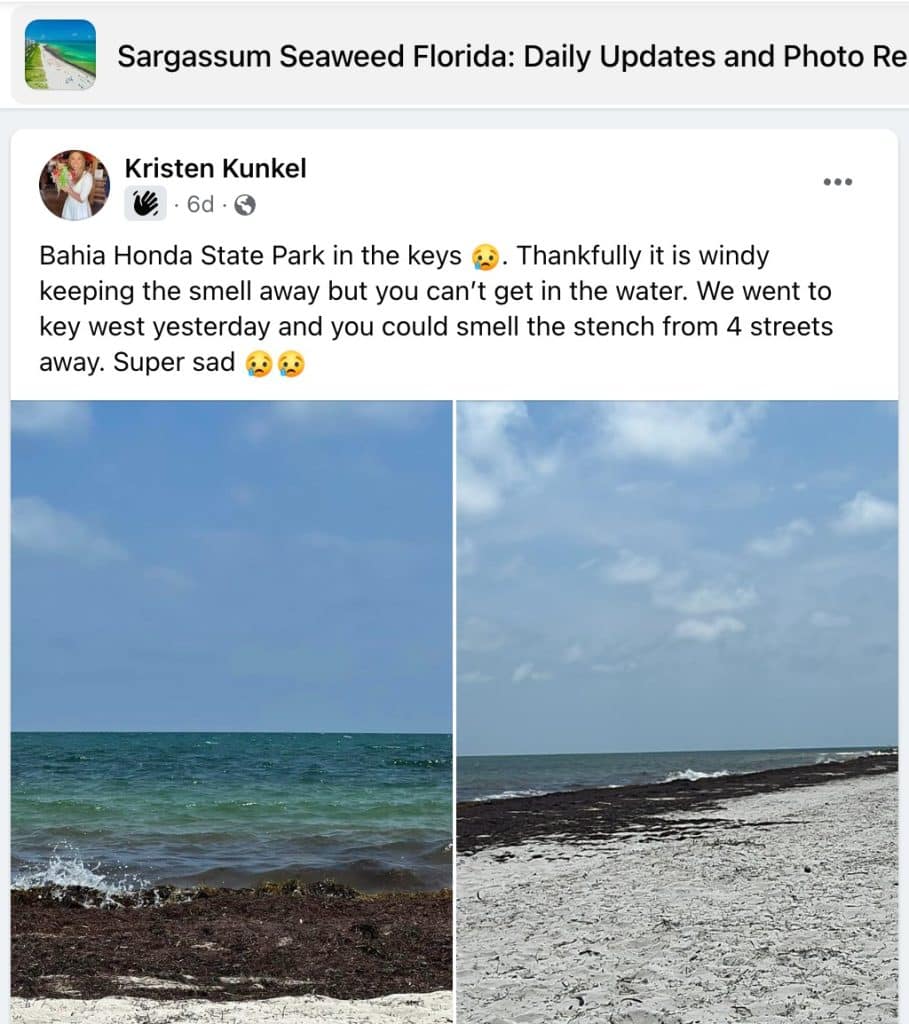
April 13 and older
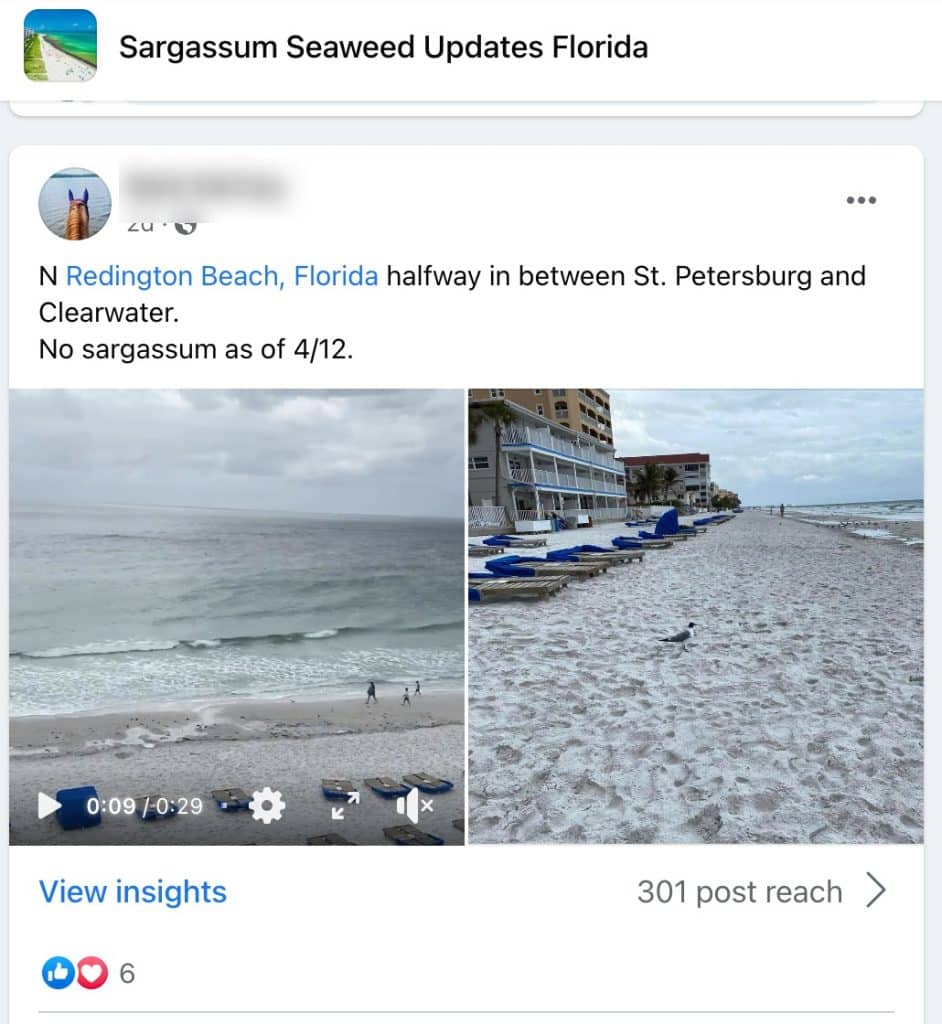
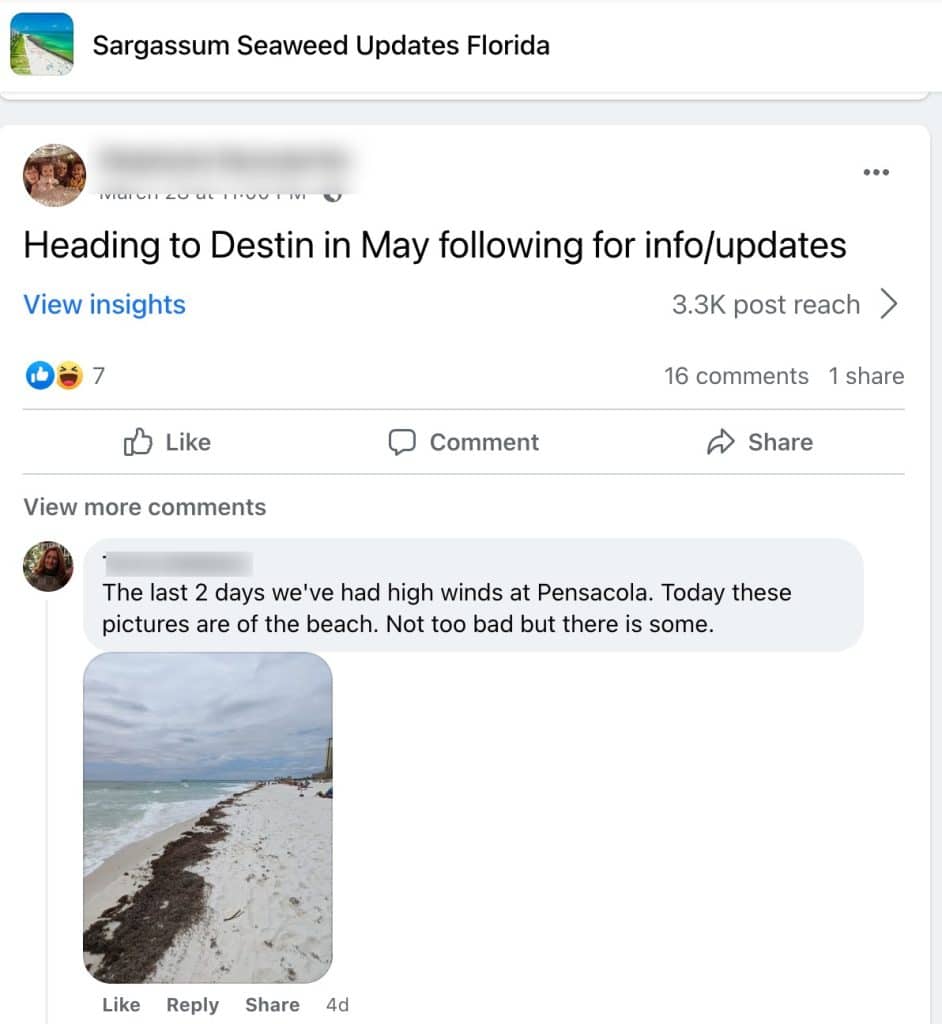
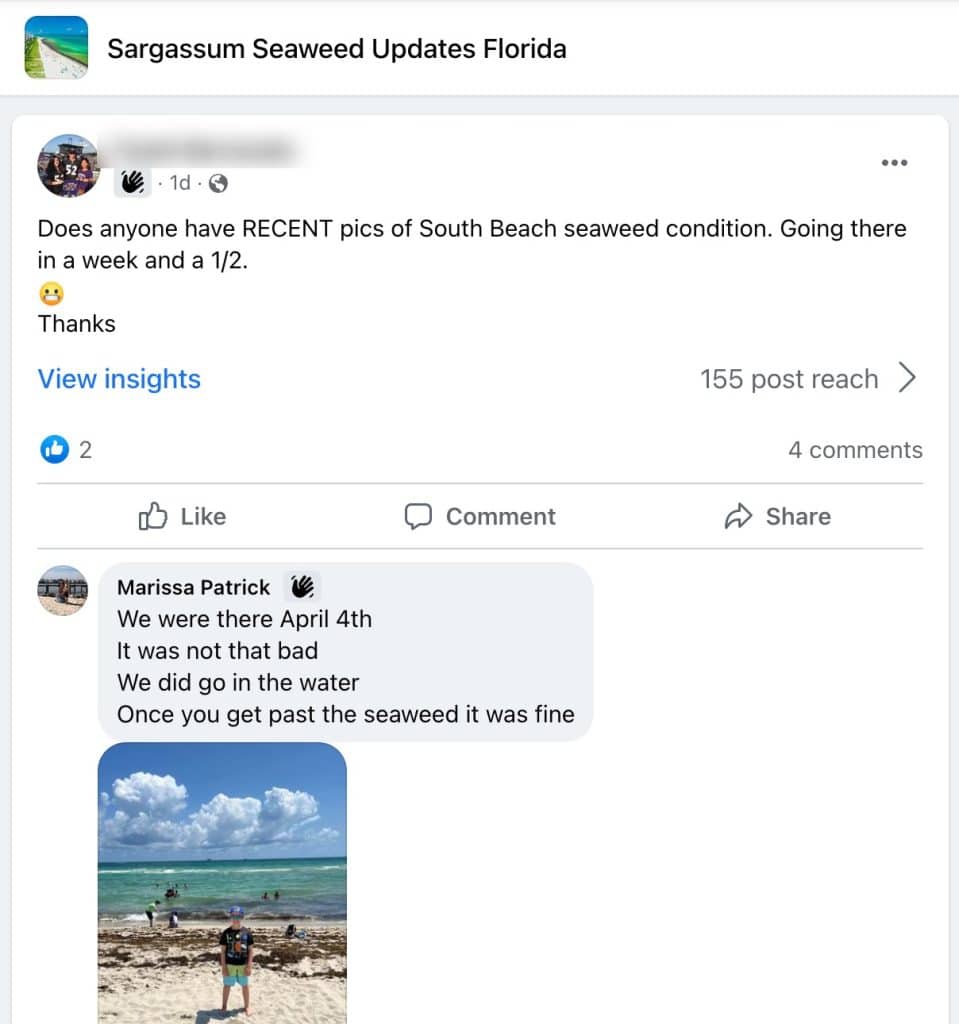
Possible alternative uses of seaweed
Sargassum seaweed has several potential uses, including:
- Fertilizer: Sargassum seaweed is rich in nutrients, including nitrogen, phosphorus, and potassium, which are essential for plant growth. It can be used as a natural fertilizer for crops and gardens.
- Animal feed: Sargassum seaweed can be dried and processed into a nutritious animal feed for livestock and fish.
- Bioplastics: Researchers are exploring the use of sargassum seaweed as a source of biodegradable plastics, which could replace traditional petroleum-based plastics.
- Biofuel: Sargassum seaweed can be converted into biofuel, which can be used to power vehicles and machinery.
- Cosmetics: Sargassum seaweed is used in some cosmetics and skincare products due to its antioxidant and anti-inflammatory properties.
- Medicine: Sargassum seaweed has been used in traditional medicine to treat a range of ailments, including respiratory problems, inflammation, and skin conditions.
- Soil erosion control: Sargassum seaweed can be used to prevent soil erosion and promote plant growth in coastal areas.

